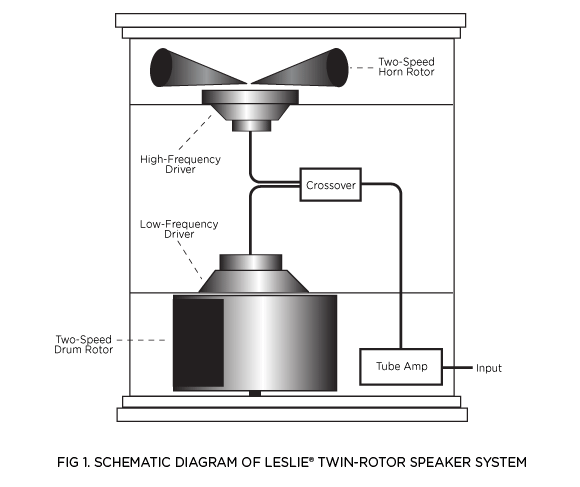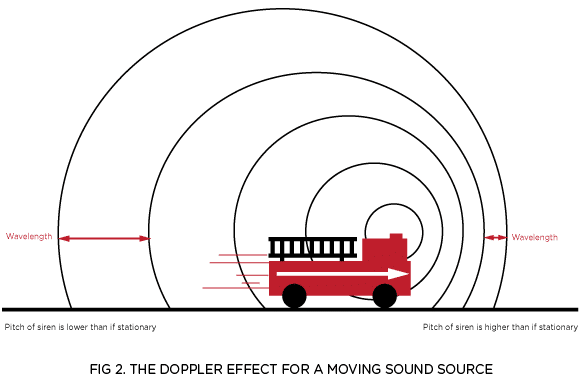
Manufacturing and Quality Control: Engineer Jorge Aguila
Recently I had an opportunity to talk with Jorge Aguila – Senior Manufacturing Engineer at Strymon. Jorge is a man who wears many hats! In
Free US Shipping On Orders Over $49
Easy 30-Day Returns
Financing Available Through ![]()
 When we decided to create a studio-class pedal that faithfully recreates the classic, unmistakable sound of the most sought-after rotating speaker system, we prepared to study every nuance.
When we decided to create a studio-class pedal that faithfully recreates the classic, unmistakable sound of the most sought-after rotating speaker system, we prepared to study every nuance.
Our sound design labs have been filled with those signature, swirling, three-dimensional sounds, as we painstakingly analyzed and recreated the physics and mechanics behind these systems.
The result is our rotating speaker technology found in Lex Rotary. Pete Celi, our Lead DSP Engineer and Sound Designer illustrates the research and sound design process in the White Paper below. Check it out!
Rotary Speaker Overview
Classic rotary speaker systems consist of a spinning horn for the high frequencies, and a rotating drum fed by a separate driver for the low frequencies. There are typically two motor speeds, slow and fast, which are also referred to as chorale and tremolo. These systems were originally designed for use with electric organs, but guitar players soon wanted in on the fun.

Rotary speaker systems create dimension and depth when rotating slowly, while generating controlled chaos when spinning at fast speeds. While simple vibrato or chorus effects can create a “poor man’s rotary” sound, a dedicated DSP implementation is required for an accurate reproduction of the many varied aspects responsible for this classic sound. Successful DSP implementation requires a comprehensive study of the physical acoustic phenomena that occur in these rotary speaker systems. Some of the key processes are discussed below.
Horn
The most identifiable effect that a rotary speaker system imparts is the pitch fluctuations known as the Doppler effect. This is a result of the horn’s movement relative to the listener, in the same way a siren appears to change pitch when a fire engine passes by.

Since the speaker makes the same movement cyclically, the pitch fluctuations occur cyclically also. This is why a traditional vibrato or chorus is sometimes substituted for a rotary effect.

However, the Doppler effect as produced by a horn spinning inside a cabinet is much more complicated than what is produced by a simple chorus or vibrato effect. As the horn spins, the sound waves from the horn reflect off the interior surfaces of the speaker cabinet, with each of these surfaces experiencing its own Doppler effect before creating secondary reflections on to other surfaces. The sound that emanates from the cabinet to the listener (or microphone) is a complex combination of the horn’s direct sound and the many reflections.

The spinning horn also produces amplitude and frequency response variations throughout its rotation. As expected, the horn’s direct signal is loudest and brightest when facing the listener, and softer and duller when facing away. These aspects also come into play in determining the nature of the many reflection signals.
Drum
The typical drum configuration is a downward-firing speaker projecting into a rotating cylinder that has a rectangular cutout. An electronic crossover circuit limits the bandwidth of the speaker such that only low frequencies are projected into the drum. As the cylinder spins and the cutout revolves, a pulsing amplitude modulation (tremolo) effect is produced for the lower frequencies. The phase of the amplitude-modulated signal also changes as the cutout moves across and to the rear of the cabinet. The resultant sound produced by the drum is hypnotic and has a “breathing” quality to it.

Miking
The classic approach to capturing the movement of sound involves a pair of mics at the top of the cabinet at the horn and a single mic at the bottom to pick up the drum. As the mics are moved closer to the cabinet, the amplitude fluctuations caused by the inverse square law effect become more pronounced and the horn signal gets a recognizable “choppy” quality at high speeds. Another result of close miking is an enhanced stereo effect that is very noticeable at slow speeds as the horn passes by one mic and then the next. As the mics are moved back, the fluctuations even out, eventually creating the sound that would be heard naturally in the room at a distance from the cabinet.

Motor speeds, ramping, and braking
In both the tremolo and chorale speeds, the horn spins slightly faster than the drum, so that the resultant sound is much more complex and evolving than if the two were spinning at identical speeds. Additionally, the inertia of the low-frequency drum is much greater than that of the horn, making it more resistant to changes in speed. Thus, while the horn speeds up and slows down rather quickly, the drum takes much longer to reach its speed. Changing speeds is where the “magic” of these systems is most apparent.
Some rotary systems allow for “braking”, which is when the speed of the horn and drum is reduced to zero so there is no more rotation. With the brake applied, the system is just a two-way stationary speaker system. When the brake is released and the systems starts spinning again, the full impact of the complexity of the system unfolds.
Amplifier
The original rotary systems had a tube amplifier built in to drive the speakers. Overdriving the amp creates harmonics that add a new dimension once they are set into motion through the rotating system. This sound is often referred to as the “growl” of a rotary speaker system, and it has become a signature trademark of these systems.
Strymon Rotary Algorithms
In developing the algorithms that produce these unmistakable sounds, we painstakingly analyzed and recreated the physics, mechanics, and intricate processes discussed above.
The horn signal exhibits all the chaotic yet periodic fluctuations inherent in rotary speaker cabinets. The drum signal pulses and breathes. A two-speed motor engine with braking capability controls the independent Horn and Drum processes. The speed ramp-times reflect the drum’s resistance to change and the horn’s light weight. Fast and slow speeds are independently adjustable, and trimming of the acceleration times is allowed for.
Additionally, a variable mic-distance control allows a wide range of sounds, from dramatic close up sweeping and swirling, to more mellow and calming undulations. A tube preamp drive control allows for overdriving the system to create rich harmonic content, with additional control of the Horn level to match your amp’s voicing. All of this without the need to lug around a behemoth cabinet, setting up microphones, worrying about proper microphone placement, and performing costly motor maintenance and cleaning.
*All product names used in this article are trademarks of their respective owners, which are in no way associated or affiliated with Strymon or Damage Control.
Subscribe to our newsletter to be the first to hear about new Strymon products, artist features, and behind the scenes content!

Recently I had an opportunity to talk with Jorge Aguila – Senior Manufacturing Engineer at Strymon. Jorge is a man who wears many hats! In

Strymon co-founder Pete Celi is responsible for the sound design and DSP algorithm creation for all the Strymon pedals that use DSP. Recently I had the

When we decided to create a studio-class pedal that faithfully recreates the classic, unmistakable sound of the most sought-after rotating speaker system, we prepared to
32 Responses
i love these white papers! thank you for taking the time to explain these to us, mere mortals 🙂
Yep. Want it.
Another incredible Pedal from Strymon! You’ve done it yet again!
Making the seemingly impossible possible! You guys truly do ROCK!
Love the highly engineered pedals – keep up the great work. I really enjoyed reading the white paper on the Lex.
Can it do the univibe thing?
I want them all! Gorgeous pedals…
Bring it! … what I’ve been waiting for for a long time.One question, where does it go in the chain? Reverb, El Cap, then Rotary?
FYI, in a real Leslie there are two horns but only one is live, the other is a dummy to balance the weight of the spinning horn.
Cmt, for my guitar I put my Ventilator as the last pedal in the effects loop, the other guitarist also has his in the effects loop but in front of his delay.
Personally, I’m liking the Vent more for my clonewheel than the guitar, so that’s where I’m looking to try the Lex. 🙂
Have we seen a price yet?
@John – exactly… that’s illustrated that in Fig 4.
Stay tuned for more details… thanks!! 🙂
And how do I get on the wait list?
I always thought in a real Leslie the horn and drum spin in opposite directions…
Will it be possible to use the Lex in mono (plugged in the left output, for instance) or does it requires two amps?
@Frederic – you can use Lex in mono, no problem!
@Cmt I messed up the diagram, it is fixed now! 🙂
@John – there won’t be a waiting list… but you can sign up for our email newsletter to get notified the moment they’re available:
https://www.strymon.net/signup
Thanks!
Hi,
Rotary speakers were first produced for organs, will you demos available of a tonewheel or clonewheel playing through your simulator?
Also a question of ergonomics…. Your by-pass is on the right, an organist not using bass footpedals would normally use his left foot for fast/slow and if using bass footpedals, his/her left-hand, so the by-pass would be better placed on the left with the most used control,slow/fast, nearer to hand ( or foot )
I can’t see that it would matter much either way for guitarists, but for organists, potentially a sizeable market, I do think that the switches should be switched over.
Sounds great on the guitar demos.
Tom
…DROOL… ME WANT
I have the blueSky and it is AWESOME!!
Nice soundig gear. I like and i want it! 🙂
My opinion, the drum rotor acceleration are too fast. Lazier will be better i think. And not linear faster/slower in time.
And included the little bit wind noise in tremolo mode?
Congratulation for your leslie effect!
Zsolt
Oh, a read later the secondary functions! And very small. It is simply excellent piece!!!
How to speak with Hammond organ???
Hello Strymon! I’ve read the white paper for the Lex, and I’m still interested in how specifically you achieve the tube pre-amp overdrive.
Hey Kevin! Our goal was to capture the sound, feel and sonic details of the overdriven speaker systems. We did this by studying the various amplifiers’ overdrive characteristics, and describing the process mathematically.
Any half aware idiot knows that without accounting for doppler effects associated with the rotating assemblies, then it’s all rubbish. There is no convincing way to emulate a Leslie cabinet without the doppler effect. The only other non-Leslie thing I’ve heard that has accounted for the doppler associated phenomena is the algorithms in the old Lexicon Vortex. Short of a real, genuine Leslie cabinet, options were limited… until now. This thing seems to really, genuinely posses all of the non-linear weirdness that is part and parcel of a Leslie. Kudos.
Awesome pedals, watch out when Strymon starts making distortion pedals…. If you love sound , you’ll love all Strymon pedals..
Would it be reasonable to use this as a speaker emulator for direct recording, or is it designed to be used with an amp/speaker or another speaker emulator?
@Stephen Bier, It’s probably not ideal to be used this way only because you can’t dial out any of the rotary sounds and use just use the cab features on Lex independently.
I attached 4 3 inch 60 watt speakers onto two bike rims with ABS elbow enclosures. 4 is over doing it. Slip rings/LEDs.
Prefer four amps on board with wireless audio input but that may delay it all too long. Will be spinning domes on different rims, same axle different drive.
I’m losing the Leslie effect if i don’t enclose it all partially i guess.
For large audiences.
When I originally commented I clicked the “Notify me when new comments are added” checkbox and now each time a comment is added I get three e-mails with the same comment.
Is there any way you can remove people from that service?
Thanks!
Check here, let me know if this doesn’t work… Go to Settings > Discussion > E-mail me whenever — uncheck the box. Thanks!
Greetings,I just wanted to add my feelings here as well and I also enjoy reading the white papers,they add an interesting aspect of building a pedal,on how there is so much work that goes into a piece of gear of this caliber.Absolutely the best there is and all of you there should be extremely proud of these fantastic pedals. I will have mine in the not to distant future and I can’t wait. Best of luck and continued success with this. Don.
Very musical pedals…both the el cap and lex are utterly sublime…based on my experience with the el cap I bought the lex without hearing it….my trust was well placed…I feel very happy with my purchase…if you love getting lost in sounds, you will love this.
Well, my Lex came today and I can’t stop messing with it! I love this pedal,absolutely amazing! Thanks Strymon for a great product,the El Capistan is next.
You guys are the best.. Period!!